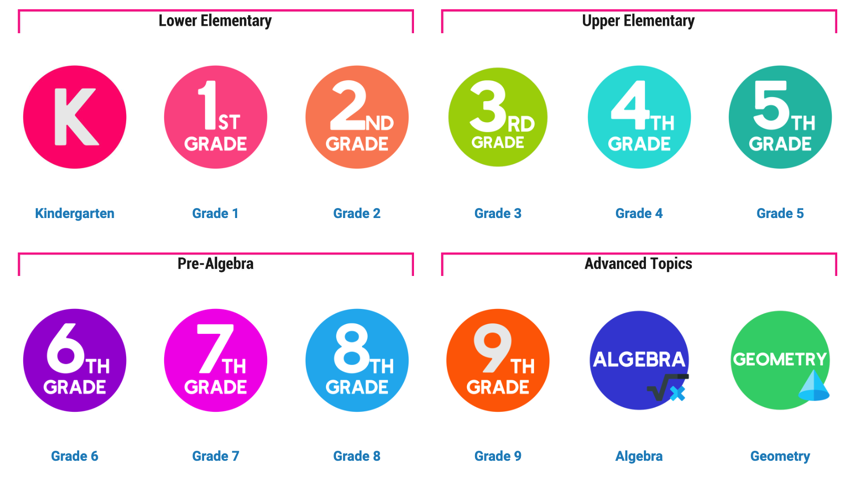Unit Circle Chart
Download Your Free Unit Circle Chart as a Printable PDF
Are you looking for a free printable Unit Circle Chart?
Use the link below to download your free Unit Circle Chart as a printable one page PDF file that you can use as a reliable reference sheet in math courses including Algebra II, Trigonometry, Pre-Calculus and Calculus, and Analytic Geometry.
The chart includes the complete unit circle along with some additional helpful information and formulas related to the sine, cosine, and tangent functions. This is the only unit circle chart that you will ever need, so be sure to save the PDF for safekeeping and print a few copies and place them in your math notebook or binder for quick reference.
To download your free Unit Circle Chart, continue onto the next section and use the download link to get yours, and, if you need a review of how to use the unit circle, continue to the middle section of this page for a quick review.
Unit Circle Chart PDF Download
Click the link below to download your free one page Unit Circle Chart reference sheet, which features a complete unit circle chart for the sine, cosine, and tangent trigonometry functions. The chart can be downloaded as a printable PDF file that you can use a reliable reference guide.
► Unit Circle Chart PDF Download: Click Here to Get Yours
Unit Circle Chart Preview
How to Use a Unit Circle Chart
Before we review some helpful tips and strategies for how to use a unit circle chart to solve trigonometry problems, it is important that you understand what a unit circle chart actually is.
In math, a unit circle chart is a visual aide where you have a circle with a center at the origin (the point (0,0)) with a radius of 1. The standard form equation of this circle is x² + y² = 1, and all of the angles created by the a radius of the circle are measured in degrees or radians are marked in various locations around the circumference of the unit circle. Each corresponding point is labeled using sine, cosine, or tangent functions based on the angle measure.
Why is the unit circle chart useful? Given the cyclic nature of trigonometry functions, the unit circle serves as the foundation for learning and remembering trigonometry functions, identities, and meanings.
Being able to understand the unit circle requires a deep understanding of both geometry and algebra, since it shows how a given angle can point to a coordinate pair on the coordinate plane, except that cosine represents the x-value and sine represents the y-value. While the unit circle may seem complicated, it is really just taking your understanding of graphing circles on the coordinate plane to the next level.
Since the unit circle includes a lot of information, having a unit circle chart handy will allow you to correctly solve a variety of problems without having to memorize dozens of equations and relationships.
A unit circle chart is a handy reference that you can use to help you solve a variety of trigonometry problems.
Tips for Using the Unit Circle Chart
Here are a few tips and ideas for using a unit circle chart to help you to solve math problems (and to verify that your answers make sense):
Start by Memorizing the Signs (Positive or Negative) of All Four Quadtrants
There are four quadrants on the unit circle, and the signs related to the functions are different in each one:
Quadrant I: Both sin and cos are positive.
Quadrant II: Only sin is positive.
Quadrant III: Both sin and cos are negative.
Quadrant IV: Only cos is positive.
Think About Angles in Terms of 30°/60° and 45° Angle Families
Take a close look at the unit circle chart, and you will notice that there is a distinct pattern between the angles and the degree measures between them.
Namely, all of the radical values on the unit circles come from the embedded 30°–60°–90° and 45°–45°–90° triangles. The better that you understand these right triangles, the relationships between their sides and angles, and the Pythagorean Theorem, the better you will understand the unit circle.
Understand the Difference Between Moving Clockwise vs. Moving Counterclockwise
On the unit circle, there is a different between moving in a clockwise direction and moving in a counter clockwise direction. Namely, clockwise rotations (which is standard position on the unit circle) yield negative angle measures, which counterclockwise rotations yield positive angle measures.
You Can Verify Trig Identities Using the Unit Circle
Trigonometry identities such as sin²θ + cos²θ = 1 are embedded within the unit circle chart.
So, if you wanted to use the unit circle to prove that sin²θ + cos²θ = 1, you could simply pick any point on the unit circle and show that it’s coordinates will satisfy the Pythagorean Theorem.
Make Conversions Between Radians and Degrees
Finally, one of the most helpful ways to use a unit circle is to make fast and accurate conversions between radians and degrees.
Note that 180° = π radians. So you can make the conversion as follows:
Degrees x (π/180) = Radians; and
Radians x (180/π) = Degrees
Keep these tips in mind when you are working with the unit circle and don’t get discouraged if it seems confusing at first. The more practice that you get using the unit circle chart, the better you will understand it!
Looking for Free K-12 Math Worksheets?
Check out the Mashup Math Free Worksheets Library, where you will find hundreds of topic and grade-specific PDF math worksheets with complete answer keys for Grades K-9, Algebra, and Geometry!






